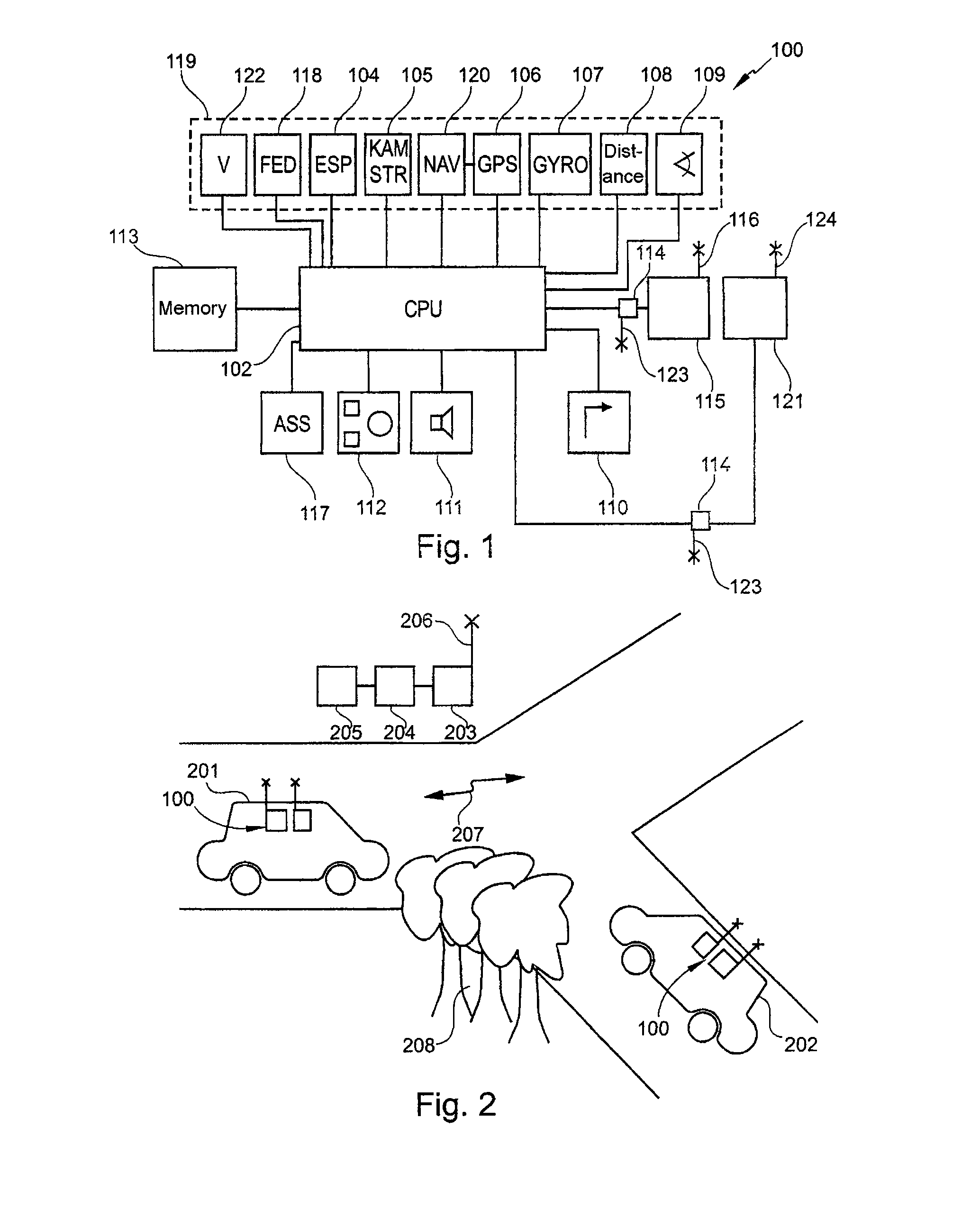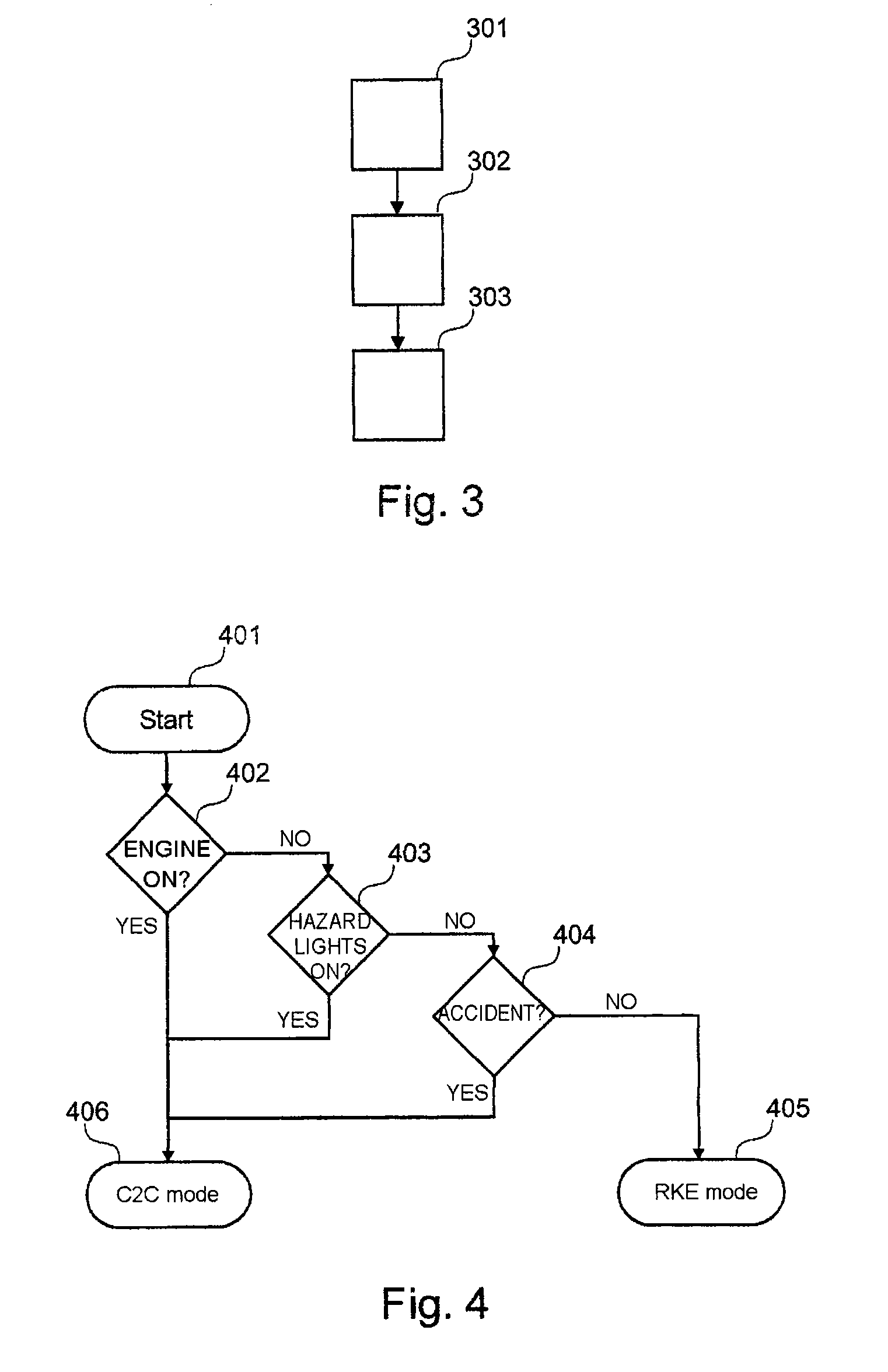Transmission of vehicle-relevant data of a vehicle via mobile communication
a vehicle and mobile communication technology, applied in the field of communication and safety technology for vehicles, can solve the problems of limited junction assistance function, inability to inability to achieve direct communication between vehicles at junctions, so as to improve communication between vehicles
- Summary
- Abstract
- Description
- Claims
- Application Information
AI Technical Summary
Benefits of technology
Problems solved by technology
Method used
Image
Examples
first exemplary embodiments
[0088]FIG. 4 and FIG. 5 show flowcharts for methods based on exemplary embodiments of the invention to illustrate the coexistence C2X, RKE or the use of two communication units.
[0089]The coexistence or the processing of both instances of application (C2X and RKE) as an integration step will first of all be illustrated by way of example with reference to FIG. 4. Following once-only initialization [starting] of the radio communication controller in step 401, the vehicle status is requested [in step 402, a check is performed to determine whether the engine is switched on; in step 403, a check is performed to determine whether the hazard lights are switched on; in step 404, a check is performed to determine whether an accident sensor has responded, that is to say whether an accident has been detected] and then the decision-making is performed for the respective mode [C2C mode, RKE mode]. If one of these questions receives a yes response, the system operates in C2C mode. If all these que...
second exemplary embodiments
[0105]The methods and systems already described can be used to support or extend vehicle-to-vehicle X communication (C2X) by means of the radio technology of wireless access and driving authorization units.
[0106]This involves setting up a radio link at 433 MHz or 800 MHz to 980 MHz (driving authorization communication) in addition to the intended 5.9 GHz (DSRC) in order to use better physical properties of said radio link.
[0107]The second exemplary embodiment described below further improves the invention in the area of prioritization and congestion control.
[0108]To date, it has been proposed that CSMA be used for congestion control in the driving authorization communication. This is now being extended. If communication by means of DSRC already exists in a parameter around the vehicle, driving authorization communication is no longer used for transmission. This ensures that in areas with a relatively large density of vehicles the low frequency is not overloaded and is free for other...
fourth exemplary embodiments
[0135]Road traffic accidents with pedestrians often occur in confusing situations or because the driver of the motor vehicle has merely not seen the pedestrian. For this reason, intensive development is currently being put into pedestrian recognition by means of video sensor systems. However, these have the same problem as the driver, in principle, that they can only recognize pedestrians who are visible in visual terms from the vehicle.
[0136]This is the starting point for the fourth exemplary embodiments. Many modern vehicles are equipped with a “remote keyless entry” function, that is to say with a radio key. Modern versions of these radio keys have a range of 100 m and more. Many pedestrians have vehicles and therefore also have a radio key with them.
[0137]This is subsequently used in order to recognize these pedestrians. To this end, the driving authorization unit in the vehicle transmits a “search command” at short intervals while traveling. If a key receives such a search comm...
PUM
 Login to View More
Login to View More Abstract
Description
Claims
Application Information
 Login to View More
Login to View More - R&D
- Intellectual Property
- Life Sciences
- Materials
- Tech Scout
- Unparalleled Data Quality
- Higher Quality Content
- 60% Fewer Hallucinations
Browse by: Latest US Patents, China's latest patents, Technical Efficacy Thesaurus, Application Domain, Technology Topic, Popular Technical Reports.
© 2025 PatSnap. All rights reserved.Legal|Privacy policy|Modern Slavery Act Transparency Statement|Sitemap|About US| Contact US: help@patsnap.com



